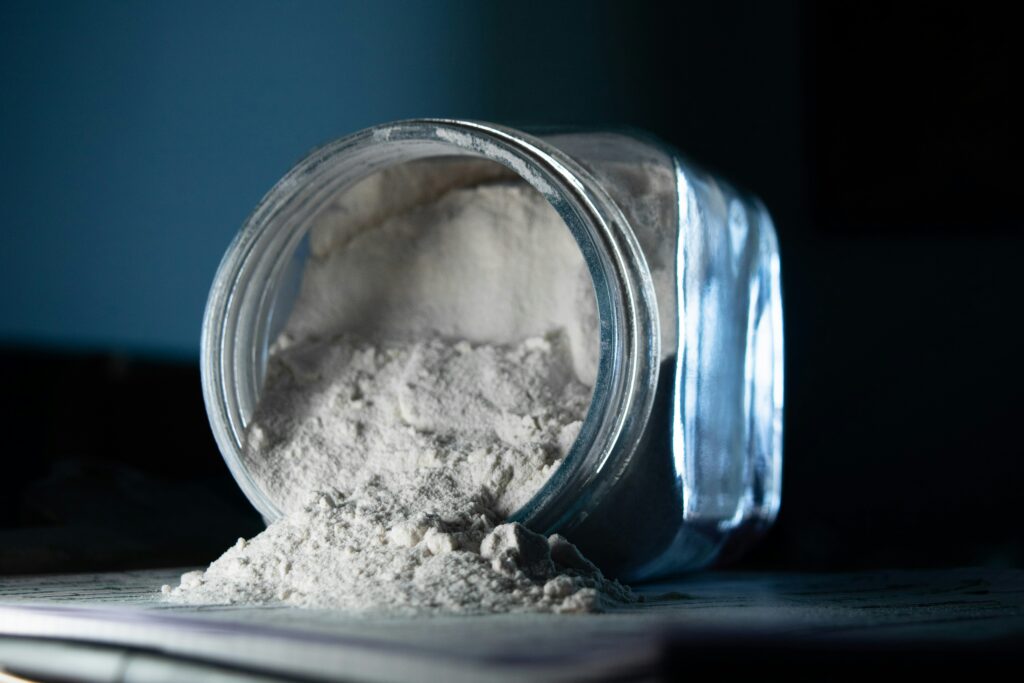Flowability is a critical property in many industrial sectors, as it determines the efficiency of manufacturing processes and the quality of finished products. Whether in metallurgy, food processing , or pharmaceuticals, understanding and optimizing flowability helps ensure smooth processes, limiting losses and inefficiencies. This article explores in detail this fundamental concept, its influencing factors, and the measurement methods used to assess it.
1. Introduction to flowability
Definition of flowability
Flowability is defined as the ability of a material, whether liquid or particulate, to flow uniformly and consistently under the influence of gravity or other mechanical forces. In industry, it often refers to the ability of a material to fill a mold (for alloys) or to flow freely in complex systems (for powders).
In the case of metal alloys, castability is determined by the ability of the molten metal to fill mold cavities before solidifying. This characteristic is essential in foundry processes, where poor castability can lead to structural defects in the produced parts. For powders, castability refers to their ability to flow freely without forming agglomerates or requiring mechanical intervention.
Importance of flowability in industrial processes
Flowability plays a central role in production line performance. Good flowability ensures a consistent supply of raw materials, reduces the risk of equipment jams or malfunctions, and ensures consistent finished product quality. Conversely, poor flowability can cause costly downtime, material degradation, and production losses.
In the food industry, for example, the flowability of food powders (flours, spices, powdered milk) is crucial to ensure accurate dosing during packaging or mixing. In additive manufacturing, the flowability of metal powders determines the precision of the parts produced and the repeatability of processes.
Sectors affected by flowability
Flowability is a universal property that concerns many industrial sectors:
- Metallurgy : In the foundry, to optimize the fluidity of molten alloys.
- Food industry : To ensure the fluidity of powdered products in production lines.
- Pharmaceutical : To ensure the efficient handling of excipients and active powders.
- Cosmetics : To test the fluidity of powders used in beauty products.
- Additive manufacturing : To evaluate the performance of metal and polymer powders.
2. What is flowability?
Castability is a key concept in many industrial processes, but its definition and characteristics vary depending on the material and application. This section explores the fundamentals of castability, its specificities across materials, and its crucial role in production.
General definition of flowability
Flowability refers to the ability of a material to flow freely and evenly under the influence of gravity or other external forces. It can apply to both liquid materials and divided solids, such as powders or granules. This property is essential for ensuring efficient handling of raw materials and optimizing processing.
In the case of liquid materials, flowability is generally influenced by parameters such as viscosity, temperature, and the characteristics of the container or environment. For divided solids, it strongly depends on the particle size , particle shape, bulk density, and particle interactions.
Differences between castability of alloys and powders
The castability of alloys primarily concerns their ability to fill mold cavities evenly before solidification. This phenomenon is critical in foundry work, where poor castability can cause defects such as voids or surface irregularities. The greater the temperature range between an alloy's liquidus and solidus, the lower the castability is likely to be, as the material tends to solidify prematurely.
In contrast, the flowability of powders relies on their ability to flow freely in equipment or through mechanical systems without forming agglomerates. Cohesive powders, characterized by high interaction forces between particles, often have poor flowability and require flow-aiding devices, such as vibrators or agitators.
Importance of understanding flowability
An accurate understanding of flowability is essential for designing efficient industrial processes and avoiding production losses. Good flowability ensures uniform material distribution, improved productivity, and consistent finished product quality. Conversely, poor flowability can lead to production downtime, dosing problems, or product defects.
Furthermore, a correct assessment of flowability allows the selection of the right equipment for each material. For example, in the food industry, specific dosing systems are often designed based on the flowability of powders, while in metallurgy, the design of molds depends on the flowability properties of the alloys used.

3. Factors influencing flowability
The flowability of a material, whether powders, granules, or alloys, is influenced by multiple intrinsic and extrinsic factors. These parameters determine its ability to flow freely and uniformly, thus determining the efficiency of industrial processes. Understanding these factors is essential to optimize material performance in complex production environments.
Intrinsic properties of materials
The intrinsic properties of materials play a central role in their flowability. These characteristics are linked to the physical and chemical nature of the material itself.
- Particle size : Particle size is one of the most determining factors. Powders made up of small particles tend to have poor flowability due to increased interaction forces between particles.
- Morphology : The shape of particles influences their ability to flow. Spherical particles generally have better flowability than angular or irregular particles, which fit together and create resistance.
- Bulk Density : A high bulk density indicates that the particles are compact, which may reduce their ability to flow freely.
- Surface properties : Roughness or the presence of electrostatic charges on particles can inhibit flow, especially in dry or electrically charged environments.
Effects of environmental conditions
External conditions also influence flowability, sometimes significantly. These factors must be controlled to maintain optimal performance in industrial processes.
- Humidity : Ambient humidity promotes adhesion between particles, increasing their cohesion and decreasing their flowability. This phenomenon is particularly problematic for hygroscopic powders.
- Temperature : Temperature variations alter the physical properties of materials. For example, in alloys, too low a temperature can cause premature solidification, reducing their flowability.
- Electrostatic charge : Powdered materials can accumulate electrostatic charges, causing them to clump together. This results in irregularities in flow and may require the use of charge elimination devices.
Interactions between particles
Another crucial factor influencing flowability is the interaction forces between particles. These interactions are determined by mechanical, electrostatic, and capillary forces.
- Mechanical forces : Friction between particles, often related to their roughness or shape, can cause increased resistance to flow.
- Electrostatic forces : These forces are particularly influential in dry environments. They cause particles to stick together, hindering their flow.
- Capillary forces : In the presence of moisture, liquid bridges can form between particles, increasing their cohesion and decreasing their flowability.
Consequences on industrial processes
The combined influence of these factors determines material performance in production environments. Poor management of these elements can cause process disruptions, product quality variations, or equipment inefficiencies. However, optimization based on a thorough understanding of these factors can significantly improve material flow, reducing costs and increasing productivity.
4. Flowability measurement techniques
Flowability analysis is essential for evaluating and optimizing material performance in industrial processes. Various methods are used to characterize this property depending on the material type and specific application conditions. These techniques are often standardized to ensure comparability of results between different laboratories and industries.
Assessment of slope angle and slip angle
The angle of repose, also called the angle of repose, is one of the simplest indicators for assessing the flowability of powders. This angle is measured by allowing a powder to flow from a funnel to form a pile, the inclination of the pile being the angle of repose.
- Interpretation : A low angle indicates good flowability, while a high angle reveals a cohesive and difficult to handle powder.
- Applications : This method is commonly used in the food and pharmaceutical industries to characterize powders such as sugar, flours or excipients.
The sliding angle is a complementary parameter, measured when the powder begins to flow on an inclined surface. This measurement provides a better understanding of particle interactions and friction forces.
Tests with the Hall cone and the Carney cone
These standardized tests are widely used to assess the apparent density and flowability of metal and ceramic powders. The principle is based on passing a quantity of powder through a calibrated funnel.
- Hall Cone (ASTM B213) : Suitable for powders with good flowability. The test measures the time required for a defined volume of powder to flow completely.
- Carney Cone (ASTM B964) : Used for more cohesive powders. This test is similar to the Hall Cone, but the funnel has a wider opening to allow the flow of difficult materials.
These tests provide key indicators for assessing a material's ability to flow under simulated conditions close to production environments.
Measure with Flodex
The Flodex is a specific device for assessing the flow capacity of a powder by measuring the minimum diameter of a hole through which the powder can pass three times consecutively without assistance.
- Flowability index : The diameter of the smallest hole is a simple and rapid index for characterizing the fluidity of a powder.
- Advantages : This method is particularly suitable for fine and cohesive powders, providing reproducible and easy-to-interpret results.
Using the densitap to measure packed and aerated density
The densitap is an instrument used to measure the packed density of powders by removing air between the particles. This process is done by subjecting a powder sample to repetitive vibrations or shocks.
- Packed density : Reflects the ability of particles to compact under stress.
- Aerated density : Corresponds to the density of a loose powder, measured after passing through a sieve to individualize the particles.
- Applications : This method is commonly used in additive manufacturing, food processing and cosmetics to optimize formulations and production processes.
Interpretation and usefulness of the results
The results obtained using these methods allow manufacturers to compare materials, optimize processes, and solve problems related to material flow. A thorough analysis of flowability data can also guide the selection of equipment, such as dosing systems, silos, or pneumatic conveying systems.
Are you looking for an analysis?

5. Industrial applications of flowability
Castability plays a key role in many industrial sectors, directly influencing the quality of finished products and the efficiency of production processes. This section explores the main applications of castability in various fields, highlighting specific challenges and suitable solutions.
Castability in metallurgy and additive manufacturing
In metallurgy, castability is essential to ensure proper distribution of liquid alloys in molds during foundry processes. Poor castability can lead to structural defects, such as voids or cracks, compromising the quality and durability of parts.
- Foundry : The castability of molten alloys is a critical factor in filling complex molds. Numerical simulations and empirical tests are often used to predict and optimize this property.
- Additive manufacturing : In metal 3D printing, powder flow plays a crucial role in ensuring even distribution and uniform melting. Powder properties must be rigorously controlled to ensure optimal performance.
Importance of flowability in the food industry
In the food industry, the flowability of powdered products, such as flours, spices, or powdered milk, is essential to ensure smooth production and packaging operations.
- Homogeneous Mixes : Good flowability ensures precise dosing and homogeneous mixing of ingredients, thus contributing to the consistent quality of finished products.
- Packaging : Powder fluidity directly affects the speed and accuracy of packaging machines. Cohesive powder can slow down production lines and require costly manual intervention.
Pharmaceutical and cosmetic applications
In the pharmaceutical industry, the flowability of active powders and excipients is essential to ensure dosage accuracy and tablet quality. Poor flowability can lead to problems such as weight variations or compression defects.
- Tablet compression : Optimal flowability ensures uniform distribution of materials in the matrices, avoiding structural or dissolution defects.
- Cosmetics : The flowability of powders used in formulations, such as loose or compact powders, influences their homogeneity and ease of application.
Role in materials management and transportation systems
In industries using bulk materials, such as granules or powders, flowability is a critical parameter for designing efficient storage and transportation equipment.
- Silos and hoppers : Good flowability ensures regular flow in the silos, avoiding blockages or “rat holing” phenomena (formation of empty tunnels).
- Pneumatic Conveying : Material fluidity determines the efficiency of pneumatic conveying systems, reducing losses and optimizing yields.
Specific challenges and adapted solutions
Each industrial sector faces unique challenges related to flowability, requiring tailor-made solutions to address them:
- Excessive Humidity : In humid environments, adding anti-caking agents or reducing ambient humidity can improve flowability.
- Cohesive powders : The use of vibrators, fluidizers, or other mechanical systems can facilitate flow.
- Low-flow alloys : Modifying formulations or optimizing processing temperatures can compensate for deficiencies.
6. Indices used to assess flowability
To characterize the flowability of materials, scientists and manufacturers use specific indices to quantify and interpret flow properties. These indices, based on standardized measurements, are particularly useful for comparing material performance and guiding decisions in manufacturing processes.
The Hausner Index
The Hausner index is a parameter used to assess the compressibility and cohesion of powders. It is calculated from the packed and aerated densities of the powder, according to the following formula:
Hausner Index = Packed Density / Aerated Density
- Interpretation :
- 1 ≤ IH <1.2: The powder is slightly compressible and cohesive, with good flowability.
- 1.2 ≤ IH < 1.4: The powder is moderately compressible and cohesive, indicating medium flowability.
- IH > 1.4: The powder is highly cohesive, with poor flowability requiring technical adjustments.
- Applications : This index is commonly used in the pharmaceutical and food industries to evaluate the performance of excipients and powdered products.
The Carr Index
The Carr index, also called compressibility, is a measurement that directly evaluates the tendency of a powder to compact. It is expressed as a percentage and calculated using the tamped and aerated densities according to the following formula:
- Interpretation :
- IC<15%IC < 15 \%IC<15%: Good flowability.
- 15%≤IC≤25%15 \% \leq IC \leq 25 \%15%≤IC≤25%: Average flowability.
- IC>25%IC > 25 \%IC>25%: Poor flowability.
- Applications : The Carr index is often used in conjunction with the Hausner index to provide a more detailed assessment of the fluidity and cohesion of powders.
Comparison between indices
The Hausner and Carr indices are intrinsically related, as both are based on packed and airy densities. However, their representation differs, offering complementary perspectives:
- Hausner Index : Provides a simple report, useful for quick and comparative analyses.
- Carr Index : Expresses compressibility as a percentage, providing an intuitive interpretation for assessing margins for improvement.
Importance of indices in industrial processes
The use of these indices is crucial to ensure optimal performance in various industrial sectors. They allow you to:
- Predict material performance : Identify powders requiring adjustments before their integration into processes.
- Optimize equipment : Adapt hoppers, silos or dosing systems according to material properties.
- Improve the quality of finished products : Avoid defects linked to uneven distribution or uncontrolled flows.

7. Optimization of flowability in industrial processes
Optimizing flowability is essential to ensure the efficiency of industrial processes, reduce costs, and improve product quality. This section explores key strategies and solutions for improving material flowability, taking into account specific challenges encountered in different sectors.
Methods for improving the flowability of powders
Several approaches can be used to improve the flowability of powders, depending on their physical properties and environmental constraints.
- Reducing humidity :
- Humidity is one of the main causes of excessive cohesion between particles. Using dehumidifiers or storing them in controlled environments can help limit this problem.
- Hygroscopic powders may require airtight packaging or drying agents to maintain their fluidity.
- Addition of anti-caking agents :
- Anti-caking agents, such as colloidal silica, are added to reduce the adhesive forces between particles. These additives act by forming a physical barrier around the particles, preventing them from clumping together.
- Optimization of particle size :
- Grinding and sieving processes allow particle size to be adjusted to promote better flowability. Uniform particle size, combined with spherical particles, significantly improves flowability.
Adapting equipment for better fluidity
Production equipment plays a crucial role in optimizing flowability. Adjustments can be made to reduce downtime due to flow issues.
- Use of vibrators and fluidizers :
- Vibrators and fluidizers help break up agglomerates and promote continuous flow, particularly in hoppers and silos.
- These devices are particularly effective for cohesive and low-flow powders.
- Special coatings :
- Equipment surfaces can be coated with low-friction materials, such as Teflon, to minimize powder adhesion and facilitate powder flow.
- Optimized design of silos and hoppers :
- The angles of silo and hopper walls can be adjusted to prevent blockages or rat holing. A tapered design promotes a more uniform flow.
Optimization of alloys for metallurgy
In metallurgy, the castability of alloys can be optimized by chemical and thermal adjustments.
- Modification of chemical compositions :
- The addition of specific elements can improve the fluidity of alloys. For example, silicon is often used in aluminum alloys to reduce the solidification temperature and increase their flowability.
- Precise temperature control :
- Strict management of melting and solidification temperatures allows the alloy to be kept in a range where its castability is maximum, avoiding casting defects.
Concrete case: additive manufacturing
In additive manufacturing, optimizing the flowability of metal powders is essential to ensure homogeneous layers and avoid structural defects.
- Powder quality control :
- Powders must be carefully selected based on their particle size and sphericity to ensure optimal fluidity.
- Reusing powders :
- Powder residues are often reused in processes. However, their flowability can decrease over time, requiring regular testing and adjustments, such as sieving or adding new powders.
Overall impact of optimization
Optimizing flowability has significant positive effects on industrial performance:
- Reduced downtime : Improved flow reduces production downtime due to jams or blockages.
- Improved product quality : Homogeneous flows ensure uniform distribution of materials, limiting defects.
- Increased efficiency : Optimal flowability helps speed up processes, reducing energy costs and raw material losses.
8. Regulations and standards around flowability
Flowability, as a key parameter in many industrial processes, is governed by strict standards and regulations. These frameworks ensure product quality, safety, and compliance, while facilitating trade between different industrial stakeholders. Understanding these requirements is crucial to ensuring efficient processes that comply with international standards.
Standards applicable to the measurement of flowability
Specific standards govern the methods of measuring flowability, ensuring the reproducibility and comparability of results between laboratories and industries.
- ASTM (American Society for Testing and Materials) :
- ASTM B213 : Determines the castability of metal powders using a Hall cone. This standard is widely used in metallurgy to ensure optimal performance in casting processes.
- ASTM B964 : Applies similar principles with a Carney cone for more cohesive or less free-flowing powders.
- ASTM B527 : Specifies the method for measuring the tapped density of powders, an essential data item for calculating flowability indices such as Hausner and Carr.
- ISO (International Organization for Standardization) :
- ISO 4490 : European standard describing methods for measuring the compressive strength and flowability of metal powders. It is used to assess the quality of materials for critical applications, such as aerospace and additive manufacturing.
These standards establish precise protocols to guarantee reliable analyses, thus facilitating collaboration between different laboratories and manufacturers.
Sector-specific regulations
Regulatory requirements vary depending on the industry sector and application. These regulations aim to ensure the safety of products and consumers.
- Agri-food :
- Regulations, such as the European INCO Regulation (1169/2011), impose strict standards regarding the composition and handling of food powders. Optimal flowability is essential to ensure accurate dosing and avoid contaminants.
- Flowability tests are used to validate compliance with quality requirements of production systems.
- Pharmaceutical :
- Good Manufacturing Practice (GMP) standards require complete traceability of materials and processes. Flowability testing ensures that powders used in formulations meet strict flowability criteria, thus avoiding dosage variations.
- The European Pharmacopoeia includes recommendations on the handling and evaluation of excipients and active ingredients.
- Cosmetics :
- REACH (Registration, Evaluation, Authorisation, and Restriction of Chemicals) regulations require safety testing for all materials used in cosmetics, including powders. Good flowability contributes to the precision of formulations and the quality of finished products.
Role of accredited laboratories
Accredited laboratories, compliant with ISO 17025 standards, play a central role in the evaluation and validation of material flowability.
- ISO 17025 accreditation : This standard ensures that laboratories follow validated methods and provide reliable and traceable results. It is essential for companies seeking to comply with regulatory requirements and maintain high quality standards.
- Contribution to research and development : Accredited laboratories provide valuable scientific support for the development of new materials and processes, by integrating normative requirements from the design phase.
Importance of Regulatory Compliance
Compliance with castability standards and regulations is essential for several reasons:
- Quality Assurance : Compliant analyses guarantee high-performance and safe products for consumers.
- Facilitating trade : International standards make it easier for businesses to collaborate globally.
- Risk Reduction : Complying with regulations minimizes the risks of non-compliance, such as product recalls or financial penalties.




